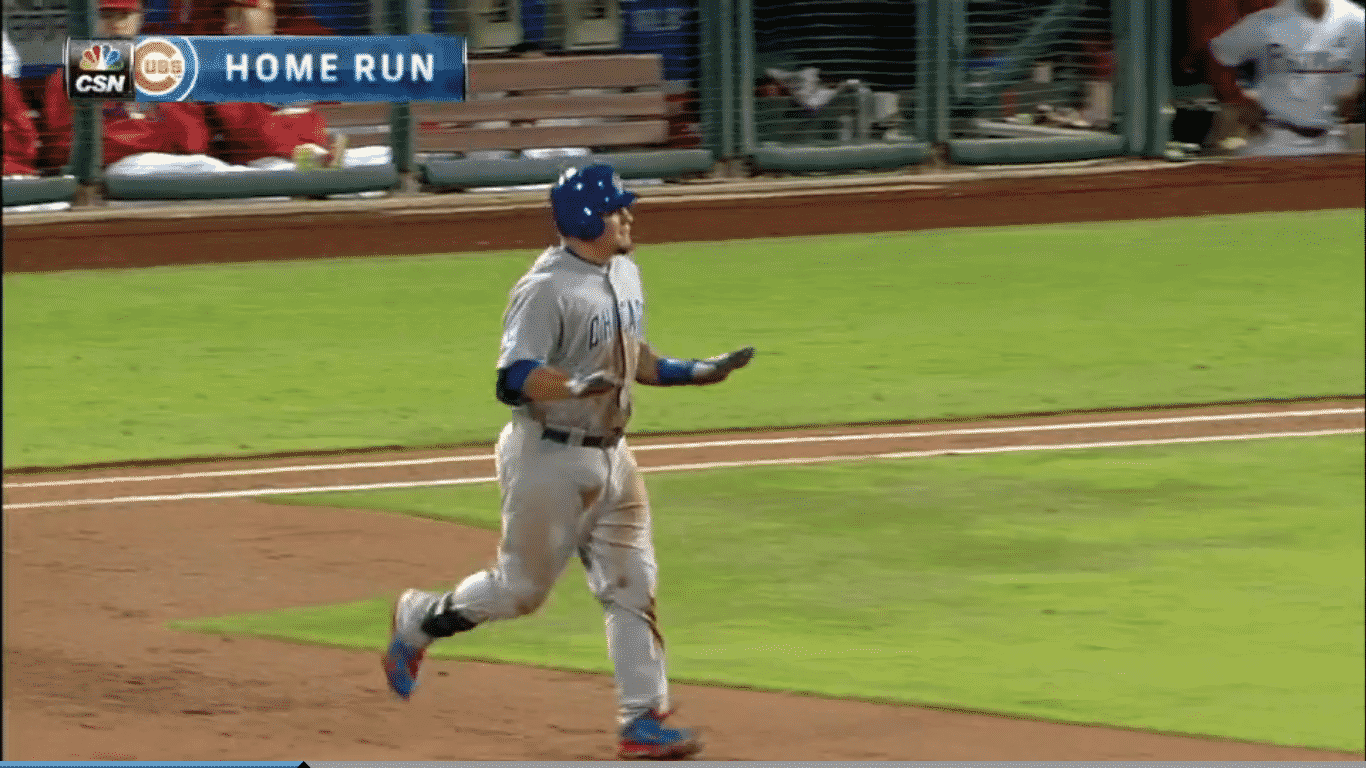
Another Look at How the Cubs Can Best Distribute Playing Time to Their Stars
Much has been made this offseason about how the Cubs should handle their glut of positional depth. Some believe Jorge Soler or Kyle Schwarber should be traded. Others believe Starlin Castro or Javier Baez should be traded. Some think it should be a combination of the two of those. Pundits like Keith Law have gone as far as to say, “Castro and Baez can’t both be on this roster in 2016.”
The focus of this article will not only be to tell you that the Cubs can keep all of their young positional players, but to go in depth on how they can fit on the same roster. I will not be addressing the fact that the Cubs could deal from their depth to acquire pitching. I simply want to show you how all the current guys they have can coexist.
I’m going to be working off of a couple of (maybe slightly flawed) assumptions here, but it’s really damn hard to predict plate appearances of each individual player on a 25 man roster, so deal with it.
- Each position will receive 650 plate appearances. I know that this varies by position in the batting order and how many bench guys the team has to fill in, but we’re going to work off of 650.
- The Cubs acquire a full-time center fielder. I can envision a scenario in which the Cubs could platoon guys in center, even giving Kris Bryant or Javier Baez some reps out there, but we’re going to ignore that for this exercise given that I don’t think it’s very likely.
- Kyle Schwarber gets 100 plate appearances as a catcher. Nobody really knows how many (if any) games he will start behind the plate next year. To be a bit conservative, I’m just going to go with that nice round number, or something like 25 games. I think that’s completely reasonable to expect from.
- There are no injuries. Injuries are a big reason that I am a proponent for keeping all these guys. Depth is huge and the versatility of guys like Baez really helps. It probably isn’t realistic to expect everyone to stay healthy, but I’m going to assume that they do.
We need to find playing time for the following six guys at these positions:
Kris Bryant (3B, LF, RF)
Kyle Schwarber (LF, RF, C)
Jorge Soler (LF, RF)
Javier Baez (2B, SS, 3B, maybe OF)
Addison Russell (SS, 2B)
Starlin Castro (2B, SS)
Looking at these six, I would label the “regular” starters as Bryant at third, Schwarber in LF, Soler in RF, Russell at SS and Castro at 2B. Baez seems to be the odd man out, but given that he plays above average defense at 2B, SS and 3B and could possibly get some reps in the outfield, he plays the role of “super-sub” in this scenario.
Using a baseline of 650 plate appearances in each of those spots plus the 100 at catcher for Schwarber, we have a total of 4,000 total PA’s. 3,350 of those will be available to divvy between the six players in question. First, let’s look at the obvious hitters who should receive full-time at bats:
Kris Bryant (650 plate appearances)
Kyle Schwarber (650 plate appearances)
These are the two I feel need to get full-time at-bats in this lineup, as they are the best two offensive players among this group. Both of their bats need to be in the lineup as often as possible. That leaves us with 2,050 plate appearances to distribute among the other 4 guys. The next tier I feel is:
Addison Russell (600 plate appearances)
Jorge Soler (550 plate appearances)
Russell has the best glove and plays shortstop, so I think he needs to get near full-time at bats. Both Russell and Soler, however, have struggled a bit with injuries in their careers and could probably benefit from days off despite their youth. Soler is also a late-game defensive sub candidate, so you could have some built-in loss of plate appearances there if the team is up in the latter innings. And now the final tier:
Starlin Castro (500 plate appearances)
Javier Baez (400 plate appearances)
Castro is the veteran here, so cutting back his playing time is the trickiest. But given his streaky nature, he is a guy who could probably benefit from multiple days off if he is scuffling. Considering how he took his demotion this past season in stride, I don’t feel like it would be an issue to cut back his at-bats a bit. As for Baez, I really think he could benefit from being eased in. Giving him breaks against tough righties who have the ability to beat him outside the zone with breaking balls could help him immensely. Meanwhile, you have him off the bench to use if you need a power bat or to sub in for late game defense.
While this system isn’t perfect, it’s perfectly reasonable and should be a highly successful way to distribute playing time between these six talented players. As long as egos stay in check (which, given how this team was this year, I don’t see being a problem), this plan should go off without a hitch. Not only do you put your players in the best position to succeed, but you also protect against injuries, ineffectiveness, and many other factors that can derail a season.
